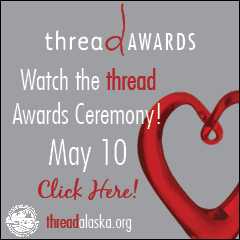
Your growing baby
0-3 months
SOME OF THE EXPECTED MILESTONES
- Brings hands near face
-
Turns head from side to side while lying on back
-
Focuses on objects 8 to 12 inches away
-
Opens and shuts hands
-
Follows moving object with eyes
-
Recognizes familiar objects and people at a distance
-
Turns head toward direction of sound
-
Prefers human faces over other shapes
-
Smiles at the sound of your voice
HOW YOU CAN HELP
- Cuddle/hold baby
-
Stimulate baby’s senses with varied textures, objects and soft sounds
-
Talk and sing to baby, describing what you’re doing and naming familiar objects
-
Imitate baby’s sounds and say them back
-
Play tracking games by moving your face and toys back and forth.
-
Respond promptly to baby’s cries
-
Give baby plenty of tummy time while awake, but always put him on his back to sleep
3-6 months
SOME OF THE EXPECTED MILESTONES
- Spontaneous smiles
-
Able to track a moving object with eyes
-
Reaches out, grasps objects
-
Cries to get attention when in need
-
Responsive to words and sounds
-
Starts to babble (such as “ba-ba-ba” or “da-da-da”)
-
Chews, sucks and bites on rattles
-
Mouths and touches everything
-
Shows interest in things beyond self
-
Pumps arms and kicks legs as if swimming in air
HOW YOU CAN HELP
-
Put baby on his or her stomach to play (tummy time) for strengthening neck and shoulder muscles
-
Encourage reaching out for toys
-
Drop a noisy toy and let baby look for it
-
Place the baby in front of a mirror
-
Good toys at this age include rattles,
a soft doll or a picture book
-
Look at and read colorful books
-
Sing and talk to baby; play music
-
Work on establishing a routine for sleeping, feeding and playtime (like a warm bath at nighttime)
-
Help her learn to sit independently
6-9 months
SOME OF THE EXPECTED MILESTONES
- Rolls over both ways (stomach to back and
back to stomach)
-
Sits up
-
Struggles for objects out of reach
-
Transfers objects from one hand to the other
-
Explores with hands and mouth
-
Responds to own name
-
Distinguishes emotions by tone of voice,
begins to respond to “no”
-
Says “dada” and “mama”
-
Begins to crawl
HOW YOU CAN HELP
- Provide large, bright-colored toys that make noise or have moving parts
-
Start naming parts of the body and objects
in the environment
-
Use body movements and actions to teach language
-
Smile and laugh together; enjoy baby’s
wonder at the world
-
Take baby places with you to increase comfort with others
-
Baby proof the house for baby’s safety
-
Sing along with children’s music
-
Praise baby for accomplishments
9-12 months
SOME OF THE EXPECTED MILESTONES
- Sits without assistance
-
Pulls self up to stand
-
Walks holding onto furniture and possibly takes a few steps without support
-
Uses pincer grasp (thumb and forefinger)
-
Babbles with different combinations of syllables (such as “ba-ma-mi” rather than “ba-ba-ba”)
-
Imitates words and sounds
-
Responds to “no” and simple verbal requests
-
Uses simple gestures, such as waving bye
-
Recognizes and points at common objects
-
Explores objects in different ways (shaking, banging, throwing, dropping)
-
Begins to use objects correctly (drinking from cup, brushing hair)
-
May show normal anxiety toward strangers
HOW YOU CAN HELP
- Start exploring, go to the mall or the zoo
-
Roll a ball to baby; every time he leans to reach a toy, he strengthens muscles
-
While playing peek-a-boo, let baby pry your hands away from your smiling face
-
Ask for behaviors that you want; for example, instead of saying “don’t stand,” say “time to sit”
-
Teach hot and cold through play
-
Point to and identify objects at home and in books
-
Avoid television time until age 2
-
A transition object (such as a blankie) may help decrease separation anxiety
-
Provide large toys that can be pushed to encourage walking
Sources: The American Academy of Pediatrics; Centers for Disease Control & Prevention








